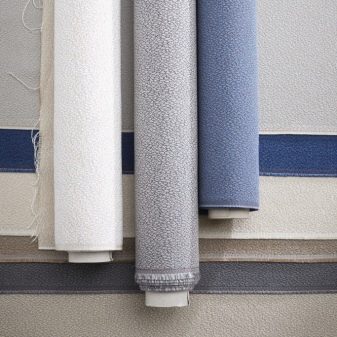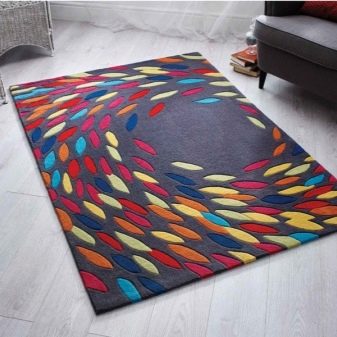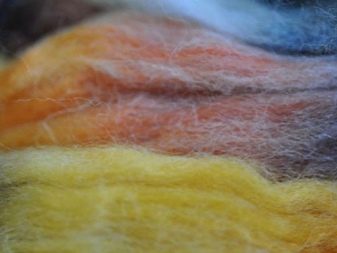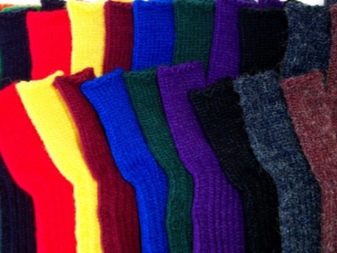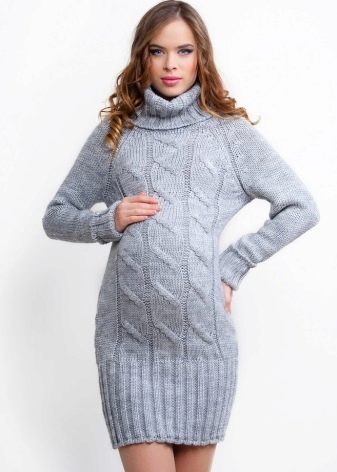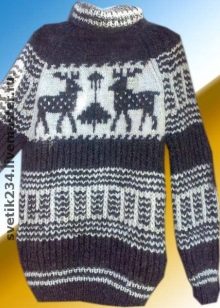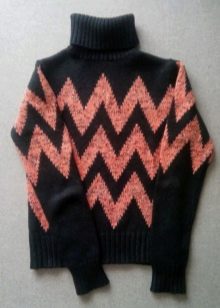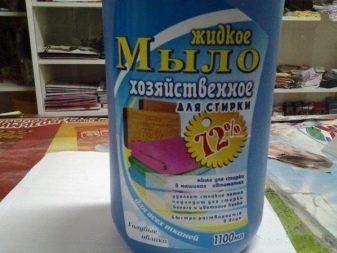Over time, there were many types of fabric, of which sew clothes and not only. Acrylic has been produced for a long time, it has unique qualities, but not everyone knows what it is.
What it is?
Acrylic fabric is a material made from acrylic fibers. It was first manufactured at DuPont. Today, this manufacturer no longer produces acrylic fabric, but it is still widely manufactured throughout the world.
The process uses a chemically manufactured substance called acrylonitrile, which is also used in the manufacture of plastics. Acrylonitrile tends to break down easily in the environment. By itself, this substance is considered toxic, but due to the fact that it is used in combination with other components and has a fast decay time, acrylic fabric remains environmentally friendly.
The material is widely used in knitted products, as upholstery and floor mats design. People often think that acrylic is an excellent substitute for wool, because it is exceptionally soft and light.
Some cashmere substitutes are made from the material described and look better than natural cashmere. Some natural fabrics incorporate acrylic fibers.
Early acrylic fabric was prone to rapid wear, so regular washing led to the fact that the upper part of the clothes had a worn appearance. To this end, Monsanto has developed a special chemical process that eliminates this disadvantage. Despite this, clothes made of such material still required careful care of themselves: when using a washing machine, washing had to take place at a minimum temperature.
The more carefully a person treats acrylic fabric, the more likely it is that the clothes will last longer to maintain their attractive appearance.
When acrylic fabric first appeared on the market, it was often considered cheap and not as valuable as natural fiber clothing.
Some early versions of this material caused inconvenience and itchiness, but over time, innovative processing and completely different applied processes solved this problem, and today many prefer acrylic to natural fibers, because it is easier to care for.
Composition
When high temperatures and pressures affect the oil, natural gas or coal, polymerization occurs and a plastic solution is formed. Polymerization is described as a process in which two or more molecules bind to a repeating molecular chain. After polymerization, the plastic solution is in a viscous form, that is, its state is somewhere between a solid and a liquid substance.
Acrylic fiber is made from polyacrylonitrile polymer - a flammable colorless liquid that is made from polypropylene. Scientists have discovered that inhalation of polyacrylonitrile looks like cyanide poisoning. This happens after exposure to a chemical with the skin or by inhalation.
The solution rotates in industrial production, and through special equipment is squeezed into the air or water, where it hardens. The acrylic fibers are then washed, dried and cut to length. As soon as the acrylic fiber has passed the preliminary preparation, it is twisted into a ball. After that, the fabric is created, as the end result of the production process.
Often, acrylic fibers and natural threads are woven together, which allows the manufacturer to reduce the cost of the final product. Therefore, if a consumer sees a shirt advertised as a cotton or wool blend, it means that it is not just cotton or wool, there is also the described fiber in the mix. It is very similar in appearance woolen. Acrylic fabric is light, warm and soft to the touch, so it is often used in natural wool or in a mixture of sheep and cashmere. The result is wonderful sweaters, hats, socks and knitting yarn.
Like polyester and nylon, acrylic hydrophobic fabric means that it has the ability to repel water. This useful property can cause the growth of bacteria in the material, which can disrupt the structure of clothes and cause odor. It also means that the fabric is capable of generating static electricity, it is flammable and difficult to extinguish.
Because of these properties, some believe that acrylic is not the best material for clothing. It is usually used to imitate wool and save manufacturers' money on the cost of materials.
Advantages and disadvantages
Acrylic fabric has its undeniable advantages.
- It is more affordable than natural fiber materials. The product is sold in most specialized shops, there is a huge selection of colors. The cost of acrylic fabric is lower, and the properties of the finished product delight the user.
- Durability is the second plus of the fabric, so it is used to make workwear.
- The clothes from such material are easy to clean and it does not fade.
- The material does not cause allergies, it is warm and soft.
- This type of fabric does not shrink and dries quickly.
Regardless of the fact that acrylic fabric has many advantages, there are disadvantages.
- Coarse texture, as a professional can easily distinguish natural wool from a substitute.
- Can not be used for clothes that will be used in a room with a high temperature, as it can easily catch fire on a person. Including in this dress can not be cooked in the kitchen.
- Over time, such clothes roll off.
- It will be very difficult to remove oil and grease from clothes made of acrylic fabric.
Types and their properties
For many reasons, acrylics are not used independently, more often in composition with other fibers, and it is desirable that they are natural. In knitting yarn, this element can be contained at 100% or 5%, it all depends on the manufacturer.
Clothing made of polyacrylate suggests 95% acrylic and 5% other natural fibers, for example:
- cotton;
- wool;
- angora.
The characteristic of such material is such that it is warm, voluminous, soft, has a long service life. It is also called artificial wool or bare synthetics.
Products made from this material are suitable for people with sensitive skin, pregnant women and children.
Due to the fact that the fabric is not crumpled, the time to care for it is minimized. It is very convenient - remove the dress from the hanger and immediately put it on without having to iron it.
The most popular combinations of acrylic with wool and mohair. The percentage may vary, in any case, the clothes look beautiful, bright.
Recently, modacryl has become increasingly popular - modern modified fiber, which includes several components, such as vinyl and polyacryl. Curtains are made of it.
In the same group with acrylic fabric are:
- capron;
- varnish;
- Bologna;
- nylon;
- perlon;
- dederon.
While any acrylic material has inherent properties, there are many variables that can change the fabric. It is about supplements. Very tightly woven fibers perfectly repel water.
Chemical additives are often used to increase certain characteristics.
The material may be coated with polyurethane or vinyl, which increase its water repellency and abrasion resistance.
Application
The main use of acrylic fabric is the creation of clothing. Can be used for street curtains. Such products are perfectly resist sunlight, so they can last more than one year. Moreover, the product does not sag, does not rot, this is the material that is perfectly suited for creating curtains with folds.
Acrylic fibers make sweaters amazing in volume and beauty. They retain their shape and appearance for a long time.
The most widespread this material received when sewing sportswear. The National Football League, for example, offers acrylic socks as part of a standard uniform. This acrylic fabric detail is an excellent option as the sock retains its shape and can be elastic. They are also suitable for tourists, because they are less likely to get blisters from sneakers than if they had cotton socks on their feet.
Acrylic fabric is warm, can be quite soft, keeps color well and is resistant to stains and dullness. This is a great solution for those who are allergic to natural wool.
Subtleties of care
Despite the fact that the fabric of acrylic can withstand a long service life, it can not be washed at high temperatures, because with such a wrong wash any clothes from this material sit down.
Before cleaning, the user will be required to examine the label in more detail, since the manufacturer takes into account the amount of one or another component in the fabric, including the amount of natural fiber and acrylic.
Always use a mild detergent, otherwise you can permanently spoil the thing. If you need a brush that is supposed to clean the stain, then it should be with soft bristles. Water should be cold or slightly warm, not more than 38 ° C. After soaking, it is imperative that you thoroughly wash the item to remove any soap residue.
Dry the fabric only in a natural way, never placed in the dryer and do not affect the hair dryer.
For easy cleaning use a solution of water and mild soap. It should be absorbed into the fabric. Re-process the fabric after it has dried completely.
If the stain is serious, you will need one cup of chlorine bleach, 1/4 cup of mild soap, a liter of water.
Allow the mixture to soak into the fabric for 15 minutes. Brush with a soft bristle wash off the stain, rinse thoroughly until all the soap is removed. Dry clothes on the street, but not on the battery.
Comparison of acrylic fabric with Oxford, see the following video.



